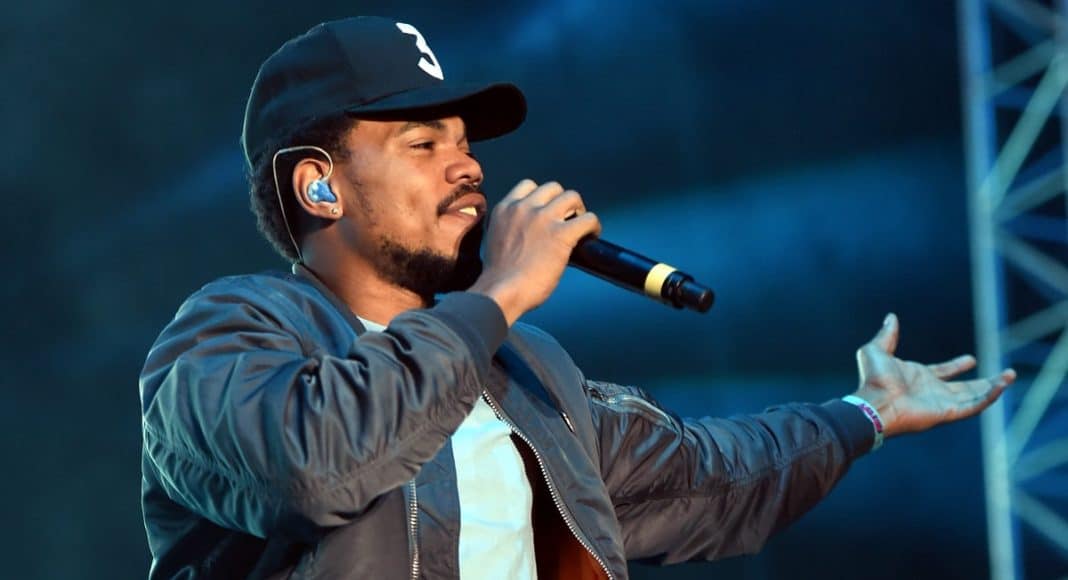What a name for an artist—Chance. Like all labels, all names creates an ethos that person eventually assumes. Surely you’ve met some with your same name. Did it surprise you the first time how similar you were? Did it shock you how suddenly competitive you were? It shouldn’t.
Of course Chance is short for Chance the Rapper. And Chance the Rapper is short for Lil’ Chano from 79th. All of which leads to Chancelor Bennett, a regal-sounding name if I’ve ever heard one. Your mind almost desires to include that extra “l,” call him Chancellor Bennett, and believe he’s some European royalty who slurps tea and slams biscuits.
But Chance isn’t someone who accepts any L’s. Not recently anyways. Since that crackling, warbling falsetto promised to “shield your name” on Kanye West’s “Ultralight Beam,” Chance can’t misfire. He also can’t stop working. To finish 2016 he dropped a surprise Christmas collaboration mixtape with Jeremih, full of jingles and jams. A week into the new year Chicago’s DuSable Museum of African American History named Chance and his father new members of their board. He also attended Barack Obama’s farewell party, modeled a “Thank You Obama” fashion line, and slated to perform at the Grammys.
-
Related Story: “Grammy Nominations 2017: Reactions, Surprises, Snubs”
This week he also (I know, I’m tired just typing out all this work) released the video to his Coloring Book standout “Same Drugs.” The track sounds like how memories of exes feel—melancholic exasperation wrapped in muffled longing. “Same Drugs” also captures nostalgia’s double-edge sword, its ability to shave away the gray and mundane, leaving lushes of strings and choirs so comforting, it’s easy getting lost. Chance’s voice is thin, yet full of anguish, wistful in analyzing just what the hell happened. “When did you forget how to fly?” he trills, the question fading almost as he asks it.
Chance may “speak of wondrous unfamiliar lessons from childhood,” but his recent brilliance is how he flutters between past and future so seamlessly. The song’s outro has Chance turning away, now looking forward, focusing on his “dandelion,” his daughter. The glum romantic transforms into a young father yearning toward the middle ground of that new oxymoron. Through its outro, “Same Drugs” becomes this pensive navigation of the spaces between adolescence and adulthood. How do you grow up without giving up? How to stay grounded, but remember how to fly? How to co-exist as both Chance and Chancelor?
When Chance decided to release the track’s music video, he of course chose an unorthodox route. He livestreamed it on Facebook Live, explaining how he approached other tech companies to do the same, but ultimately was denied. Facebook was the one company who obliged. Flashing a digital middle finger, he posted videos on his other social media platforms, promoting his Facebook livestream on the sites of Facebook’s competitors, i.e. Snapchat and Twitter. (The tweet has since been deleted.) Soon afterwards the video was available free elsewhere to watch.The one slip of Chance’s near-flawless Coloring Book run has been the mixtape’s videos. For someone so elastically creative, these visual accompaniments are surprisingly commonplace. “Same Drugs” fits within the lo-fi theater kid aesthetic Chance has executed better elsewhere—the “Sunday Candy” video and his Magnificent Coloring World Tour serving as prime examples of its arresting possibilities—but isn’t as moody or moving as the track itself, surviving mostly on Chance’s charisma. The video includes a new arrangement featuring Eryn Allen Kane, turning the song more into a duet, but like the video, it seems unrealized.
Undoubtedly though, the “Same Drugs” music video is another win for Chance. It further cements him as the lovable insider-outsider, someone who forces engagements on his own terms. We know his feelings toward record labels and he essentially taunted the Grammys into changing their rules and include mixtapes, namely his own.
Yet as his namesake warrants, it’s possible reading Chance as this walking contradiction. He isn’t Frank Ocean denying the Grammys outright, opting for the flippantly reclusive genius role. And while he might’ve learned the idea of embracing his contradictions from his mentor Kanye, he isn’t quite bombastic, constantly consuming us in his world vision. Nor he is the slippery enigma his “big brother” Donald Glover/Childish Gambino is, shrouding his character in mystery, dealing with the world selectively.
-
Related Story: “Frank Ocean Can’t Win A Grammy, But Does He Really Care?”
Unlike these contemporaries who helped guide him, Chance chooses to exist publicly, to associate himself with giant, off-white corporations like Nike, Apple, and Facebook, while fiercely maintaining as an indie artist. In a time when most new artists seem either massive and fleeting or niche and permanent, Chance’s grace is finding the space in between. He’ll live in this world, but on his terms. He’s the type of intelligent artist holding two opposing thoughts in his head, believing both simultaneously. As he searches on “Same Drugs,” he’s discovering the land between adolescent and adult. He is, as he’s called himself, a grown-ass kid.
This is why, whatever he wins at this year’s Grammys, he’s already won. Kanye likes to claim we don’t make famous people anymore, and sometimes I agree with him. We don’t produce Princes and Madonna on that level of fame. But that statement ignores what Chance has accomplished. A disruption and a catalyst, he’s a different hue of famous, someone who wields that power to change the system from within, like a golden boy politician. He doesn’t need the recognition, but he probably deserves it.


